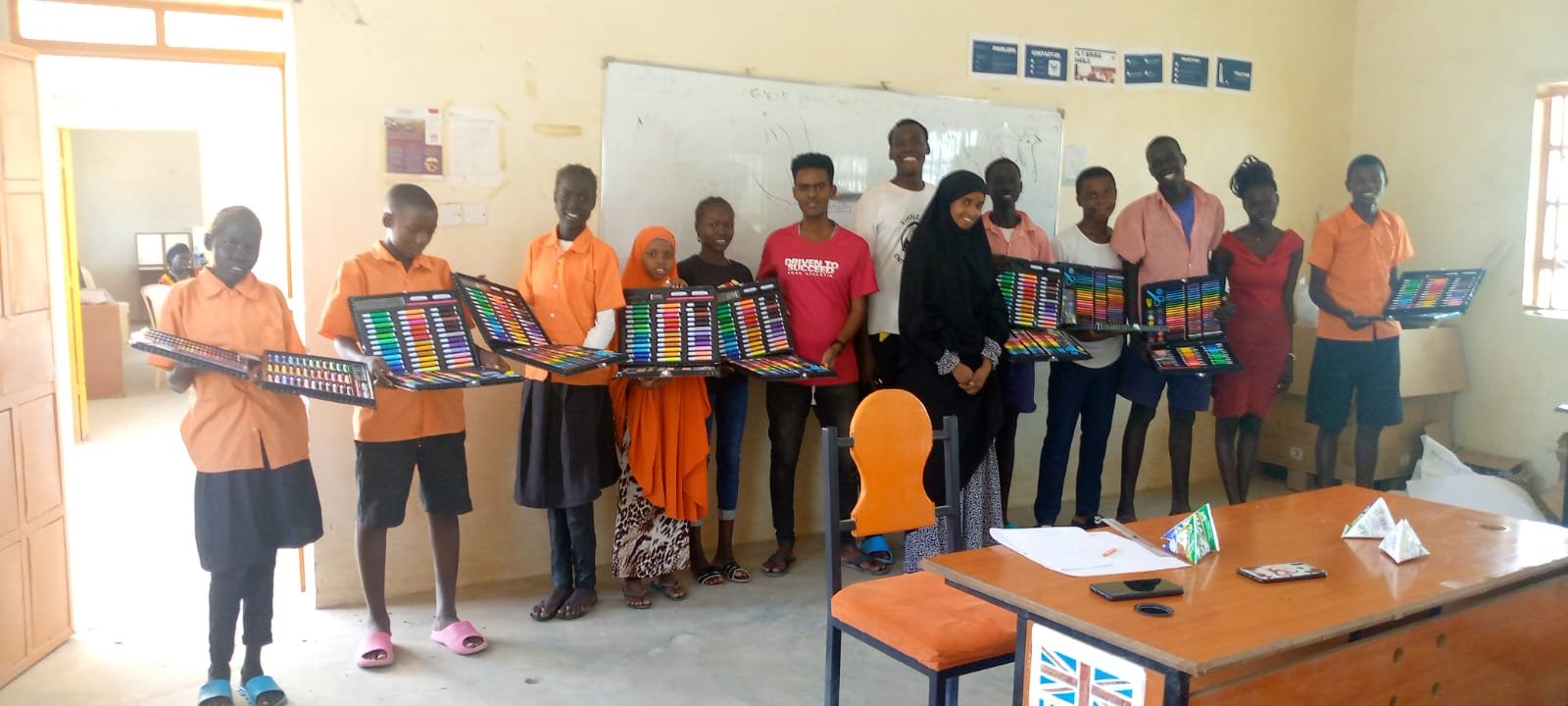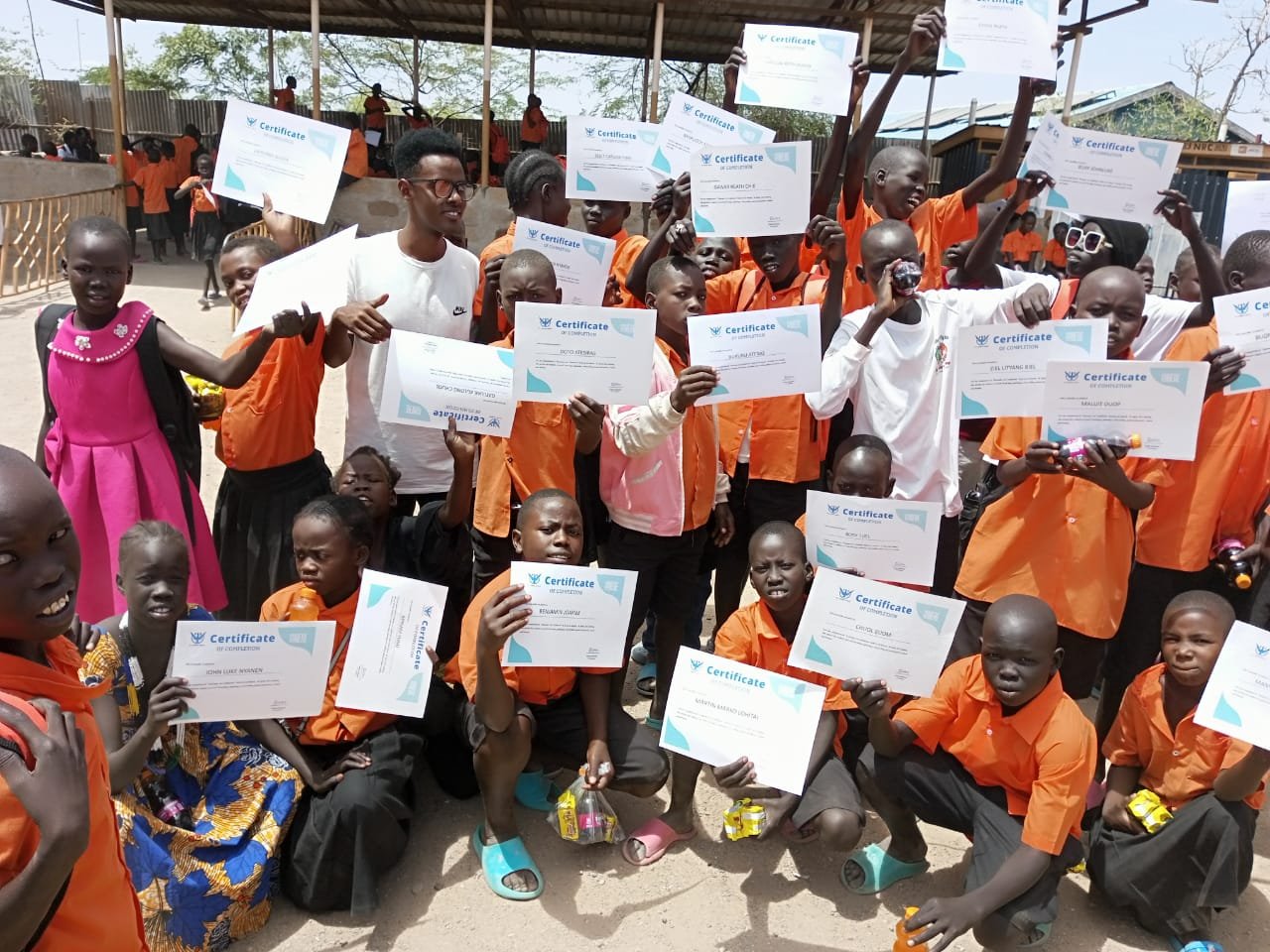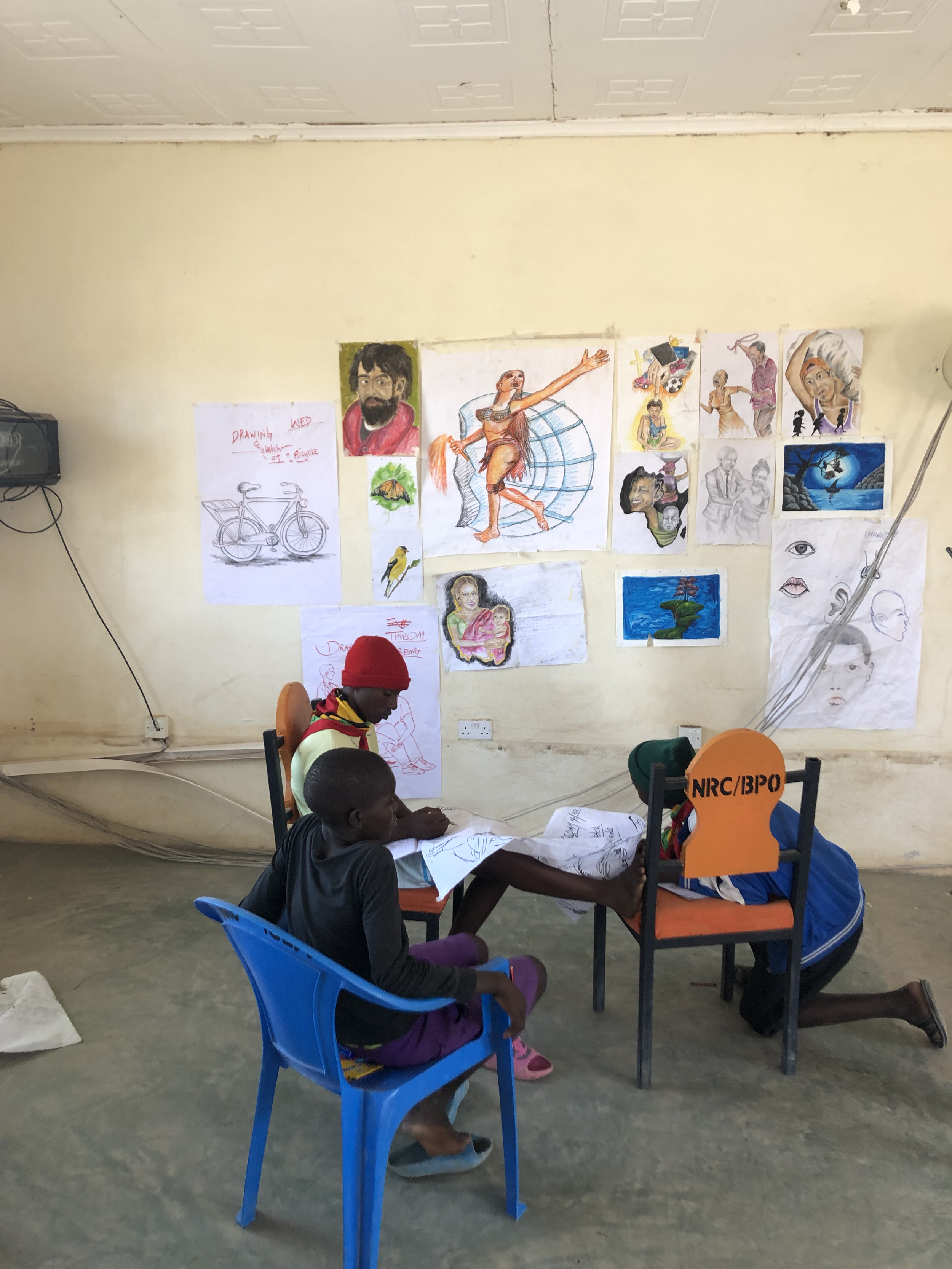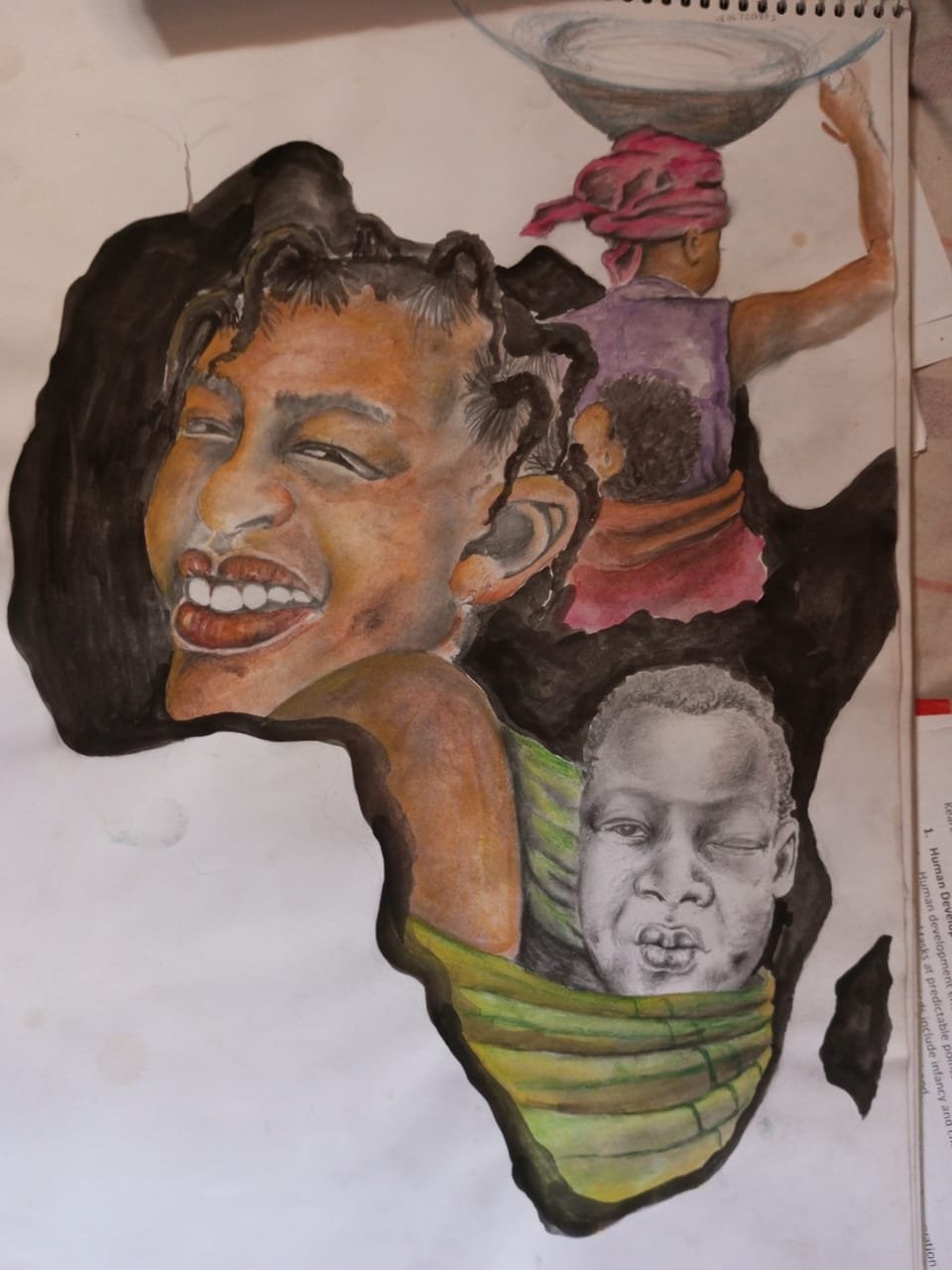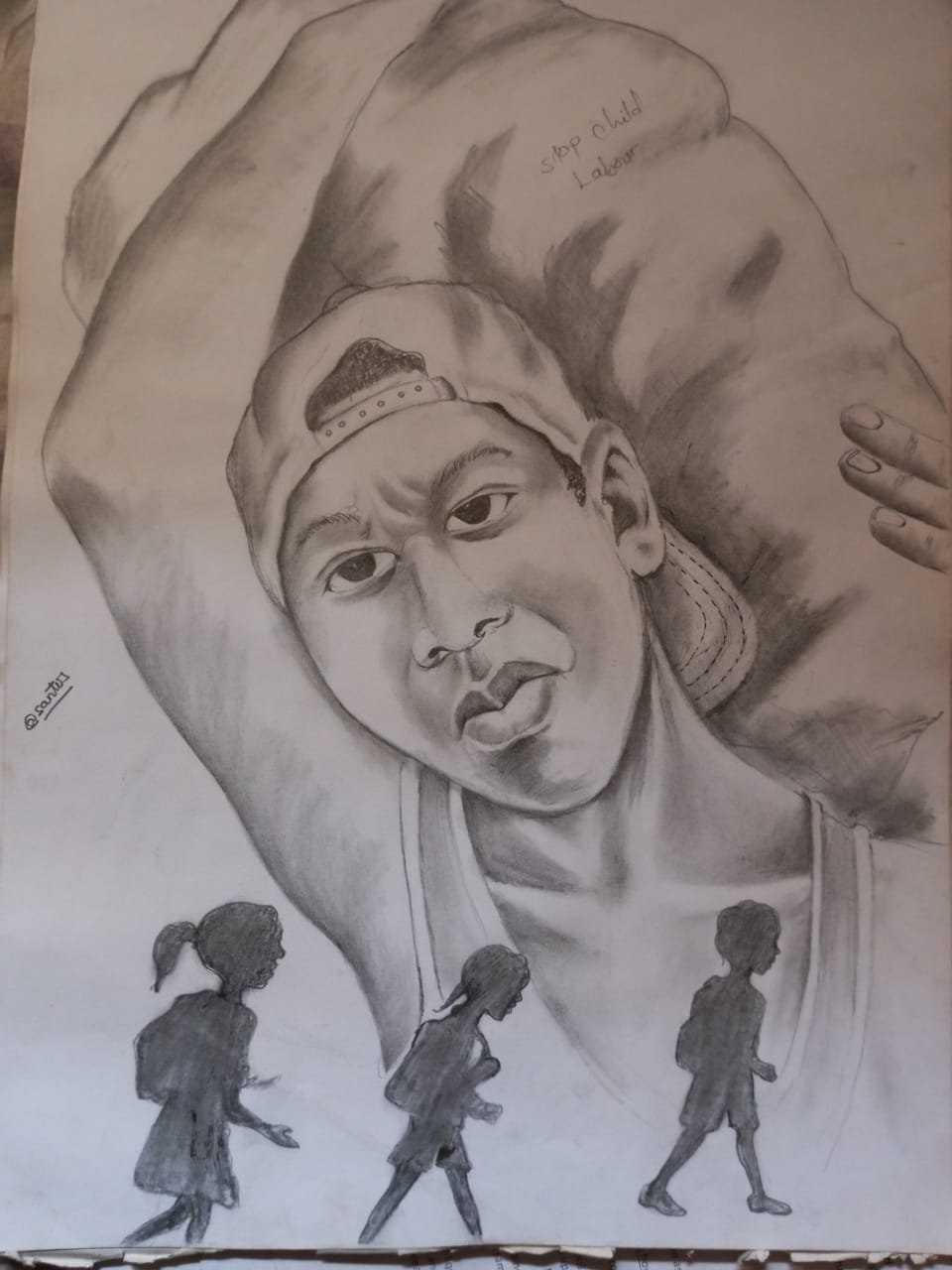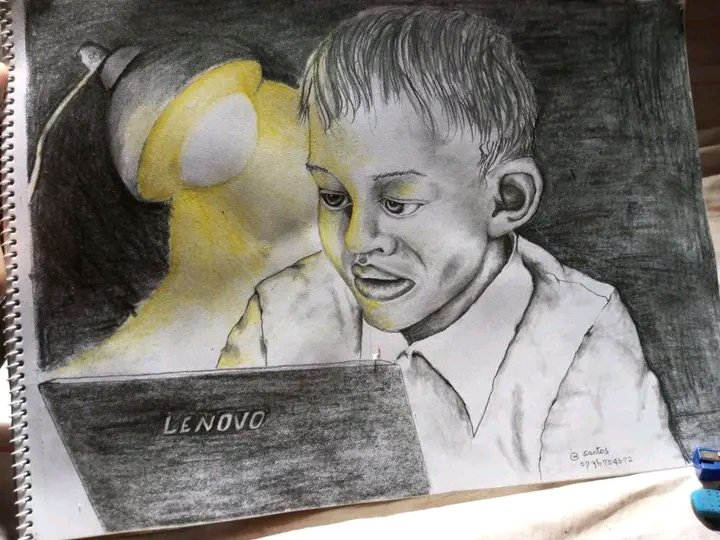Amala graduates use art to close the education and employment gap in Kakuma Refugee Camp
“We asked ourselves, what power can we give this child that will allow him to sustain himself. So we decided to provide these skills, the ability to draw or paint.”
The Fly Bring Smile team
Sadiq and Sadak, two Amala graduates, are the co-founders of Fly Bring Smile, a refugee led-organisation on a mission to make education and skills more accessible, relevant, and engaging for everyone, regardless of their circumstances. The foundations for Fly Bring Smile were created while they were exploring solutions to challenges in their community as part of their studies on the Amala High School Diploma in Kakuma Refugee Camp, Kenya. They found that many young refugees in Kakuma faced widespread unemployment issues and lacked access to acquired skills they would need to succeed in the workforce. The idea of Fly Bring Smile was therefore to bridge the gap between education, skills and employment and they decided the best way to do this was through art.
Since graduating from the Amala High School Diploma in September 2022, Sadiq and Sadak have grown their team and developed Fly Bring Smile into a working initiative that has already positively impacted hundreds of youth in the camp. Their fine art programme gives refugee youth access to art and teaches techniques in drawing and painting which they can build into a skill they can monetise. Regular exhibitions at Fly Bring Smile enable these students to exhibit and sell their art, and thanks to funding already secured by Fly Bring Smile, they are able to provide art equipment to those on the programme.
We met with Sadiq and Sadak, and their Programme Lead, Fowzia, to find out more about the work that has gone into scaling their student project into a community-based organisation that uses art to empower youth.
Let’s start at the beginning! What motivated you to launch Fly Bring Smile?
This journey started when the Amala Personal Interest Project (PIP) started during our class time, when we were brainstorming solutions to the challenges in our own communities, the refugee communities where we come from. So it really began as a class activity. We were excited by the idea of the PIP and we got a lot of help from the facilitators and the programme of Amala with drafting it. We wanted to identify and ameliorate the challenges faced in the community as a team, and when we came to understand all those challenges, we were able to come up with one to three solutions, and out of those, to bring one to life.
What solution is Fly Bring Smile bringing to your community and who is it benefitting?
On this project we just became able to work with school children. We started with that. So as an organisation, we decided to focus on youth, and the problems that the youth face. One of the main problems that they, and really all the Kakuma communities, are facing at large is unemployment. It’s not like we could give them jobs, but we decided to create a programme that gives them skills that they use to find employment within the community. With that in mind, we decided to plan a project centred around educating children in the fine arts. So that’s what we’ve been planning and working on for the first months of Fly Bring Smile existing, and it’s really worked well. We also have a lot of projects that we are planning to run in the future.
Why did you decide on fine arts as one of the solutions for unemployment issues faced in the community?
When we came to notice the unemployment issue, we came to the conclusion that art is an employable skill that a young one can do. Refugees come from a lot of different backgrounds, so it’s not uncommon to find an underage child who is living with relatives that can sustain his food or very basic needs, but not meet all his needs. So, we decided to focus on what this child can do. We asked ourselves, what power can we give this child that will allow him to sustain himself. So we decided to provide these skills, the ability to draw or paint. There are many businesses around and in refugee communities, and many need help branding and advertising their shops. So the children can engage with and help those local businesses, which also gives back to the community. We are also reaching out to people around the world. There are some teams who decided to join and direct us on how to connect to global markets, such as the NFT market, where the children can sell their art, their paintings. These teams are also helping us to participate in art presentations and exhibitions around the world, which could allow the children to win a prize or something like that, and help them move forward.
And how many students do you have in your fine arts programme?
The target is 500 students, adding up all the intakes, in ten months; and so far we’ve had 293 kids finish the programme. So right now we have one intake running in two different areas, it’s not all in one centre. Also, with every intake we have an exhibition to show off their talent, with the last one being at the Norwegian Refugee Centre. When they participate in those events they can present the work they did and win prizes, like art kits or tools for drawing. We give these to the winners to encourage them to keep up their motivation with art, and to show them that they are capable of doing more than what they thought they could.
Can you tell us about the grant you won?
Once we had come up with the idea [Fine Arts Programme], we pitched it to potential partners in the hopes that they’d join hands with us. We joined some networks and one of those was Reframe Network*. We were among the successful applicants who qualified for their grant, which was equivalent to about 5,000 USD. We used that money to design and run the fine art programme for school-going children for a period of ten months, starting in March and running until December 2022.
*Reframe is a network founded by Cohere that helps to increase direct funding, raise awareness, build networks and strengthen coordination between refugee-led organisations (RLOs), INGOs, donors and institutional bodies.
Do you have any other partners?
The Norwegian Refugee Council (NRC) have given us a grant to facilitate our programme and have kindly hosted us in their compound. They are also providing us with all the necessary resources in the classroom such as internet and power, materials for learning facilitation, and anything else we might need to help those children. We also have partnered with Cohere, who are helping us with the process of safeguarding and all those general protections, as well as organisational and capacity strengthening for the team who are facilitating the programme for children. So they give us power and they give power to our facilitators who are running the art training. So we have partners on that side, providing us with support for the infrastructure of the programme, and then we also have volunteering to make sure that Fly Bring Smile is run well and stays organised.
Do the other projects that you’re planning also focus on fine arts?
What these projects have in common is a focus on employment, and teaching skills to facilitate said employment with the Kakuma communities. In terms of our target age demographic, the only project we have planned with children so far was this one. Our upcoming projects will be targeting youths from the age of eighteen and upwards.
Do you have plans for when this programme finishes in December, will you run it again?
We are still advocating our cause and our partners are still committed to working with us in the next project and have promised to help us reimplement this programme as well. We are also planning another art programme, but this time changing our target from children to youths, which will again focus on decorative arts within the refugee communities and branding the local businesses that are run by the refugees, like doing their logos and graphics. For now we will be sticking to using art as our main tool to attack the unemployment challenge, but we are also planning to do much more to transform the community through the education centre.
We are also hoping to bring Fly Bring Smile into partnership with Amala and run some courses, as we already have access to room and resources necessary to run a class. Since we are Amala graduates this would be very special for us, as Fly Bring Smile is really a product of Amala. This is how we can give back to the community those who didn’t get the same chance as us.
What does your name, Fly Bring Smile, mean?
We named the organisation "Fly Bring Smile" to symbolise our youthful and audacious spirit.
The term "Fly" reflects our tendency to tackle challenges that are considered beyond the reach of our generation. The widespread perception that young people are incapable of creating real change, is held to be the same us the fact that humans are not capable of flight on their own.
"Bring" symbolizes the effort and sacrifices we make to bring about positive change in our communities.
"Smile" represents the fruits of our labor, which are the solutions and improvements that our efforts bring to the challenges faced by our communities, ultimately leading to a happier and freer community.
Check out the artwork from Fly Bring Smile students on their website here.
This interview was transcribed by Amala volunteer; Sophia Dermetzis.



